
A Decade of
FRENCH FASHION
19291938: FROM THE DEPRESSION TO THE BRINK OF WAR MARY CAROLYN WALDREP

DOVER PUBLICATIONS, INC. MINEOLA, NEW YORK
Copyright Copyright 2015 by Dover Publications, Inc. All rights reserved.
Bibliographical NoteA Decade of French Fashion, 1929-1938: From the Depression to the Brink of War, first published by Dover Publications, Inc., in 2015, is a new selection of illustrations from the following sources:
Les grands modeles, Journal Periodique, Paris, 1929;
Modeles originaux beaux-arts des modes, Chic Parisien, Paris, December 1932;
Chic parisien publication mensuelle, Chic Parisien , Paris, January, June, July, August, 1933;
Modeles originaux beaux-arts des modes, Chic Parisien, Paris, ca. 1935/36, August 1938.
International Standard Book NumbereISBN-13: 978-0-486-80593-1 Manufactured in the United States by Courier Corporation 79783X01 2015 www.doverpublications.com
B eginning in the 1890s and continuing into the middle of the 20th century, publishers such as Journal Priodique and Chic Parisien produced books of fashion plates for the international market.
Complete with back views, notes on fashion trends, and captions detailing fabrics and styling details in French, English, and German, these books showcased the latest in French fashion. These books were published monthly or bimonthly with twice-yearly supplements. The books were sold in the United States by a variety of distributors. The eight volumes featured here were distributed by three different New York companies S. Reinach Company in 1929, Haire Fashion Publications in 1932 and 1933, and Imported Fashion Books, Inc. in 1938.
The eighth publication had no cover, although it appears to be from 1935/1936. These beautiful full color plates offer firsthand evidence of the dramatic change in fashion in the period between the world wars. In the aftermath of the Great War, both men and women embraced new freedom in lifestyle and fashion as traditional roles and mores began to change. For women, the trend to a more relaxed silhouette, which had started before the war, became even more pronounced. By the middle of the 1920s, fashionable skirts were at the knee and a slim, boyish silhouette was all the rage. This silhouette, although quite narrow at the top, exploded with movement from the hips down pleats, ruffles, and godets gave ease to skirts, allowing women to stride forth with confidence.
Skirts began to drop slightly by the end of the decade, often by means of uneven hems, but in general, the silhouette remained in fashion through the end of the decade. Although the style was by no means adapted by everyone, the prevailing image of the 1920s woman is the flapper with short skirts and bobbed hair. The free and easy Jazz Age came to a halt in late October 1929 when stock prices began to fall precipitously, culminating on October 29, enshrined in American folklore as Black Tuesday. Stocks continued to decline over the next few weeks, recovered briefly, but then the country slid inexorably into the Great Depression. By 1933 more than 20% of Americas population was unemployed, and many of those who still had jobs had taken a pay cut. Fashion, too, took an abrupt turn as women turned to a more conservative, ladylike look.
Hemlines plummeted, the waistline moved to a more natural position, and shoulders widened. For many, make do was the fashion watchword of the decade. Clothes were patched and remade and, when absolutely necessary, replaced with the inexpensive ready-to-wear from outlets such as Sears, Roebuck, and Co. and Montgomery Ward. Nevertheless, fashion is hard to suppress, and Americas women craved glamour as represented by the stars they saw on the silver screen. Indeed, the burgeoning film industry soon became even more influential on style than the Paris fashion houses.
The prevailing look of the thirties was long and lean, with hemlines reaching the bottom of the calf by 1932, and then beginning a slow rise to just below the knee by the end of the decade. The silhouette was very fluid, with draping and bias cutting emphasizing the body. Skirts were very narrow, with slim godets, pleats, or gathers providing walking ease. Bodices were draped, asymmetrical, crossed, wrapped, peplumed, and trimmed with openwork, ruffles, pleats, and bow collars, while sleeves came in infinite variety leg of mutton, puffed, raglan, kimono, and more. Novelty seaming, both curved and angular, was seen on both skirts and bodices. The full-skirted tunic top over a slim skirt for both day and evening became popular, and after a decade of being ignored, the waistline was emphasized with belts, sashes, and insets.
Jackets, ranging in length from bolero to hip-length, became a fashion staple, worn over dresses as well as skirts and blouses, and fur lamb, fox, mink, or rabbit became the trim of choice, banding sleeves, hems and necklines. By 1938, styles were beginning to be more severe and less fluid, with shorter skirts and less draping, foreshadowing the pared-down styles of the World War II years.  Smart ensemble of soft crayon green wool. Both dress and coat have inserted godets. White crpe de chine plastron with a stylish bow.
Smart ensemble of soft crayon green wool. Both dress and coat have inserted godets. White crpe de chine plastron with a stylish bow.  Smart afternoon frock of blue crpe mongol (silk), with vertical openwork over a foundation of absinthe crpe mongol.
Smart afternoon frock of blue crpe mongol (silk), with vertical openwork over a foundation of absinthe crpe mongol.  Smart afternoon frock of blue crpe mongol (silk), with vertical openwork over a foundation of absinthe crpe mongol.
Smart afternoon frock of blue crpe mongol (silk), with vertical openwork over a foundation of absinthe crpe mongol.
The bows are lined with absinthe.  Smart frock of pepita (checked) wool. Simple belted style, with pointed godets. Plastron of white crpe georgette, brown cravat.
Smart frock of pepita (checked) wool. Simple belted style, with pointed godets. Plastron of white crpe georgette, brown cravat.  Afternoon frock of pink crpe de chine, with novelty apron.
Afternoon frock of pink crpe de chine, with novelty apron.  Afternoon dress of emerald green crpe satin with rows of curved seams.
Afternoon dress of emerald green crpe satin with rows of curved seams.  Afternoon dress of emerald green crpe satin with rows of curved seams.
Afternoon dress of emerald green crpe satin with rows of curved seams.
The back view shows dipping godets. In front a self-fabric bow, lined with white crpe satin.  Evening dress of pann velvet in a soft crayon blue. Graduated pleats of varying length form the shaped skirt.
Evening dress of pann velvet in a soft crayon blue. Graduated pleats of varying length form the shaped skirt.  Frock of crayon blue wool crpe. Small belt of self-fabric.
Frock of crayon blue wool crpe. Small belt of self-fabric.
Next page

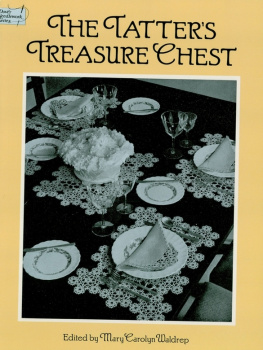


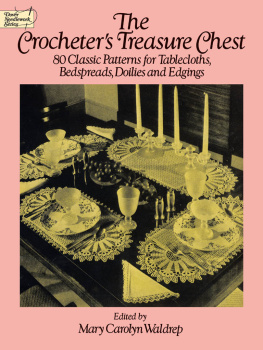

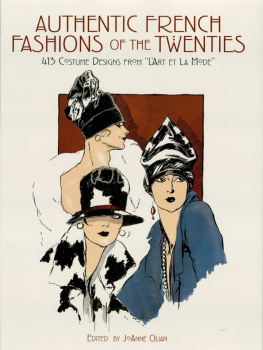
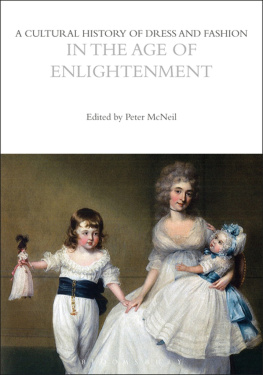
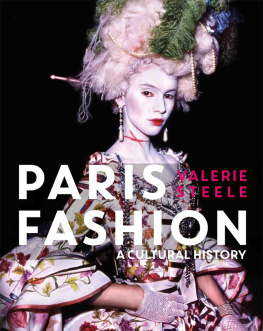
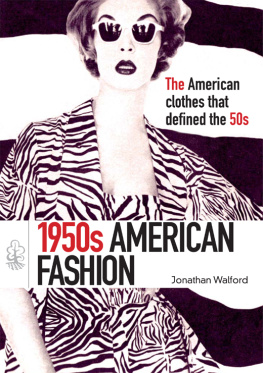

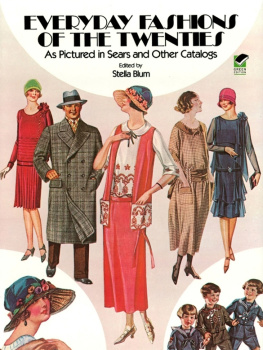
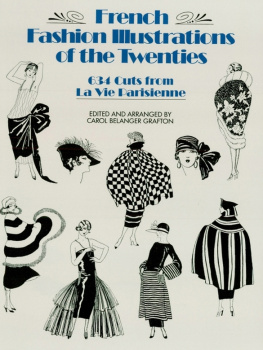
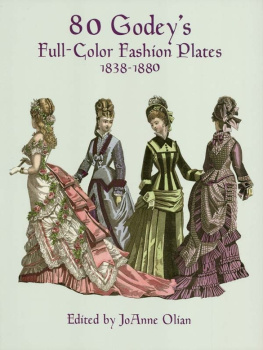

 DOVER PUBLICATIONS, INC. MINEOLA, NEW YORK Copyright Copyright 2015 by Dover Publications, Inc. All rights reserved. Bibliographical NoteA Decade of French Fashion, 1929-1938: From the Depression to the Brink of War, first published by Dover Publications, Inc., in 2015, is a new selection of illustrations from the following sources: Les grands modeles, Journal Periodique, Paris, 1929; Modeles originaux beaux-arts des modes, Chic Parisien, Paris, December 1932; Chic parisien publication mensuelle, Chic Parisien , Paris, January, June, July, August, 1933; Modeles originaux beaux-arts des modes, Chic Parisien, Paris, ca. 1935/36, August 1938. International Standard Book NumbereISBN-13: 978-0-486-80593-1 Manufactured in the United States by Courier Corporation 79783X01 2015 www.doverpublications.com B eginning in the 1890s and continuing into the middle of the 20th century, publishers such as Journal Priodique and Chic Parisien produced books of fashion plates for the international market.
DOVER PUBLICATIONS, INC. MINEOLA, NEW YORK Copyright Copyright 2015 by Dover Publications, Inc. All rights reserved. Bibliographical NoteA Decade of French Fashion, 1929-1938: From the Depression to the Brink of War, first published by Dover Publications, Inc., in 2015, is a new selection of illustrations from the following sources: Les grands modeles, Journal Periodique, Paris, 1929; Modeles originaux beaux-arts des modes, Chic Parisien, Paris, December 1932; Chic parisien publication mensuelle, Chic Parisien , Paris, January, June, July, August, 1933; Modeles originaux beaux-arts des modes, Chic Parisien, Paris, ca. 1935/36, August 1938. International Standard Book NumbereISBN-13: 978-0-486-80593-1 Manufactured in the United States by Courier Corporation 79783X01 2015 www.doverpublications.com B eginning in the 1890s and continuing into the middle of the 20th century, publishers such as Journal Priodique and Chic Parisien produced books of fashion plates for the international market.  Smart ensemble of soft crayon green wool. Both dress and coat have inserted godets. White crpe de chine plastron with a stylish bow.
Smart ensemble of soft crayon green wool. Both dress and coat have inserted godets. White crpe de chine plastron with a stylish bow.  Smart afternoon frock of blue crpe mongol (silk), with vertical openwork over a foundation of absinthe crpe mongol.
Smart afternoon frock of blue crpe mongol (silk), with vertical openwork over a foundation of absinthe crpe mongol.  Smart frock of pepita (checked) wool. Simple belted style, with pointed godets. Plastron of white crpe georgette, brown cravat.
Smart frock of pepita (checked) wool. Simple belted style, with pointed godets. Plastron of white crpe georgette, brown cravat.  Afternoon frock of pink crpe de chine, with novelty apron.
Afternoon frock of pink crpe de chine, with novelty apron.  Afternoon dress of emerald green crpe satin with rows of curved seams.
Afternoon dress of emerald green crpe satin with rows of curved seams.  Evening dress of pann velvet in a soft crayon blue. Graduated pleats of varying length form the shaped skirt.
Evening dress of pann velvet in a soft crayon blue. Graduated pleats of varying length form the shaped skirt.  Frock of crayon blue wool crpe. Small belt of self-fabric.
Frock of crayon blue wool crpe. Small belt of self-fabric.